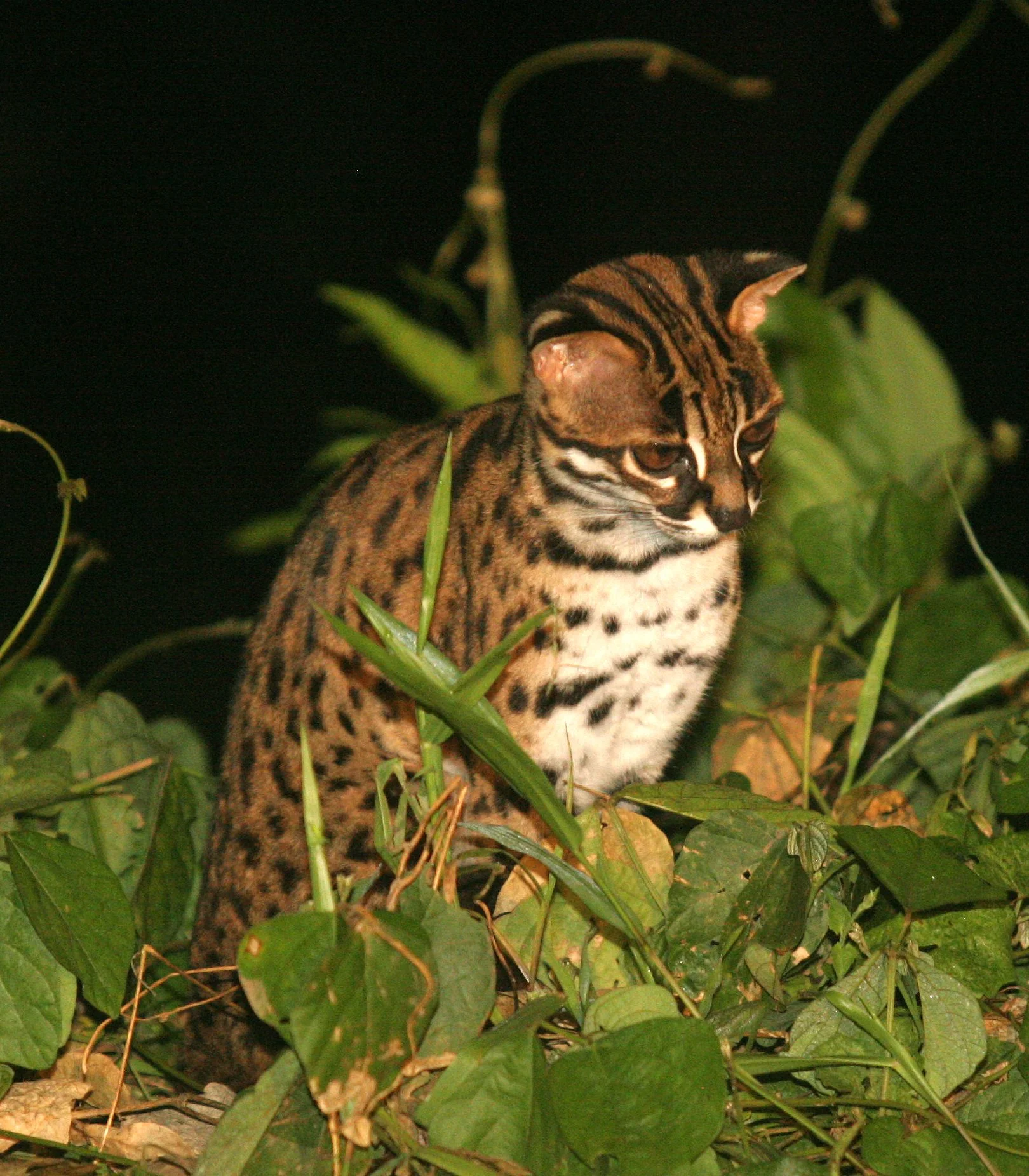The Sunda leopard cat (Prionailurus javanensis) is a small wild cat species native to the Sundaland islands of Java, Bali, Borneo, Sumatra and the Philippines that is considered distinct from the leopard cat occurring in mainland South and Southeast Asia.
The Sunda leopard cat inhabits the islands of Sumatra, Borneo, Java, Bali, Tebingtinggi, Palawan, Negros, Cebu and Panay. Its natural habitat is lowland tropical evergreen forest, but it has also adapted to human-modified landscapes with suitable vegetation cover, and inhabits agricultural areas such as rubber, oil palm, and sugarcane plantations.
In Sabah's Tabin Wildlife Reserve, Sunda leopard cats had average home ranges of 3.5 km2 (1.4 sq mi).
In Kalimantan, Sunda leopard cats were recorded in mixed swamp forest and tall interior forest at elevations below 20 m (66 ft) in the vicinity of Sabangau National Park between 2008 and 2018.
Results of a phylogeographical study indicate that the Sunda leopard cat lineage diverged in the Middle Pleistocene. The Borneo population is thought to have expanded to Sumatra and the Philippines island of Palawan after the Toba eruption, when these islands were connected during the late Pleistocene glaciation. Since leopard cats in Palawan and Negros show low genetic differentiation, it is possible that humans introduced the leopard cat from Palawan to Negros and adjacent islands. Based on these results, two Sunda leopard cat subspecies are recognised, namely P. j. javanensis and P. j. sumatranus, the latter including the Visayan leopard cat.
Sunda leopard cats photographed by camera-traps in Kalimantan between 2008 and 2018 were foremost nocturnal, overlapping with the activity pattern of flat-headed cats (Prionailurus planiceps). Those recorded in an oil palm plantation in central Kalimantan were active from late afternoon to early morning and preyed foremost on ricefield rats and other rodents.
Nine radio-collared Sunda leopard cats in Sabah used predominantly oil palm plantations and also logged dipterocarp forest adjacent to the Tabin Wildlife Reserve. They were observed up to 4 m (13 ft) above ground hunting rodents and beetles, and preyed foremost on Whitehead's spiny rat, dark-tailed tree rat, long-tailed giant rat, lizards, snakes and frogs. Males had larger home ranges than females, averaging 3.5 km2 (1.4 sq mi) and 2.1 km2 (0.81 sq mi), respectively. Each male's range overlapped one or more female ranges. Scats collected of Sunda leopard cats in sugarcane fields in Negros island indicate that they feed foremost on rodents such as house mouse, Polynesian rat, ricefield rat and Tanezumi rat. To a lesser extent, they also prey on amphibians, geckos, lizards and passerine birds occurring in these sugarcane fields. In western Java, Sunda leopard cats were encountered close to human settlements and resting on the ground.
Sunda or Bornean Leopard Cat (Prionailurus javanensis) - Seen over 18 at Tabin in Sabah Borneo
































